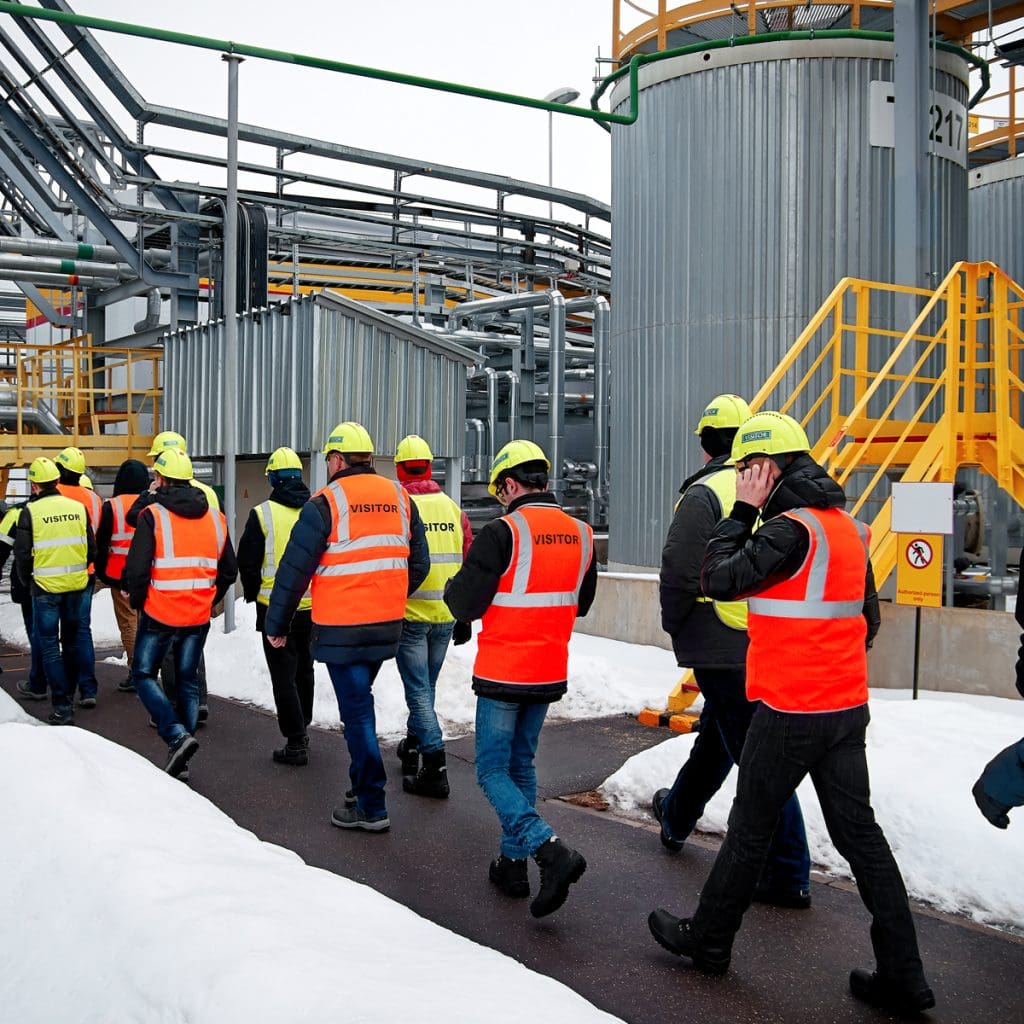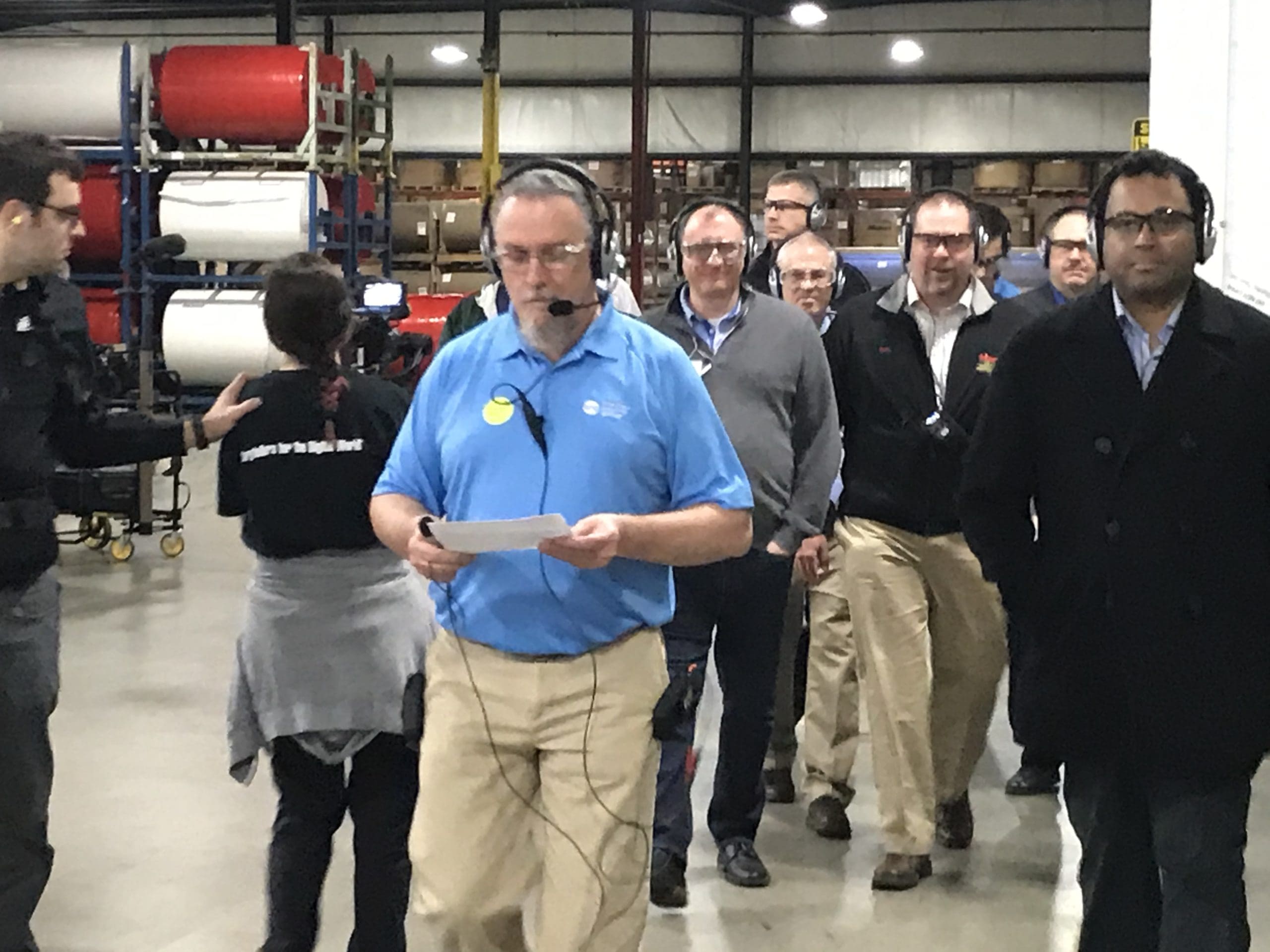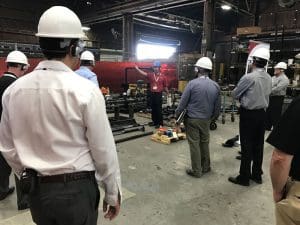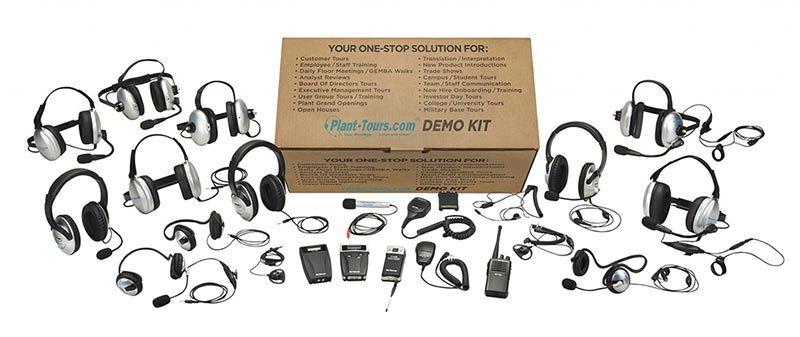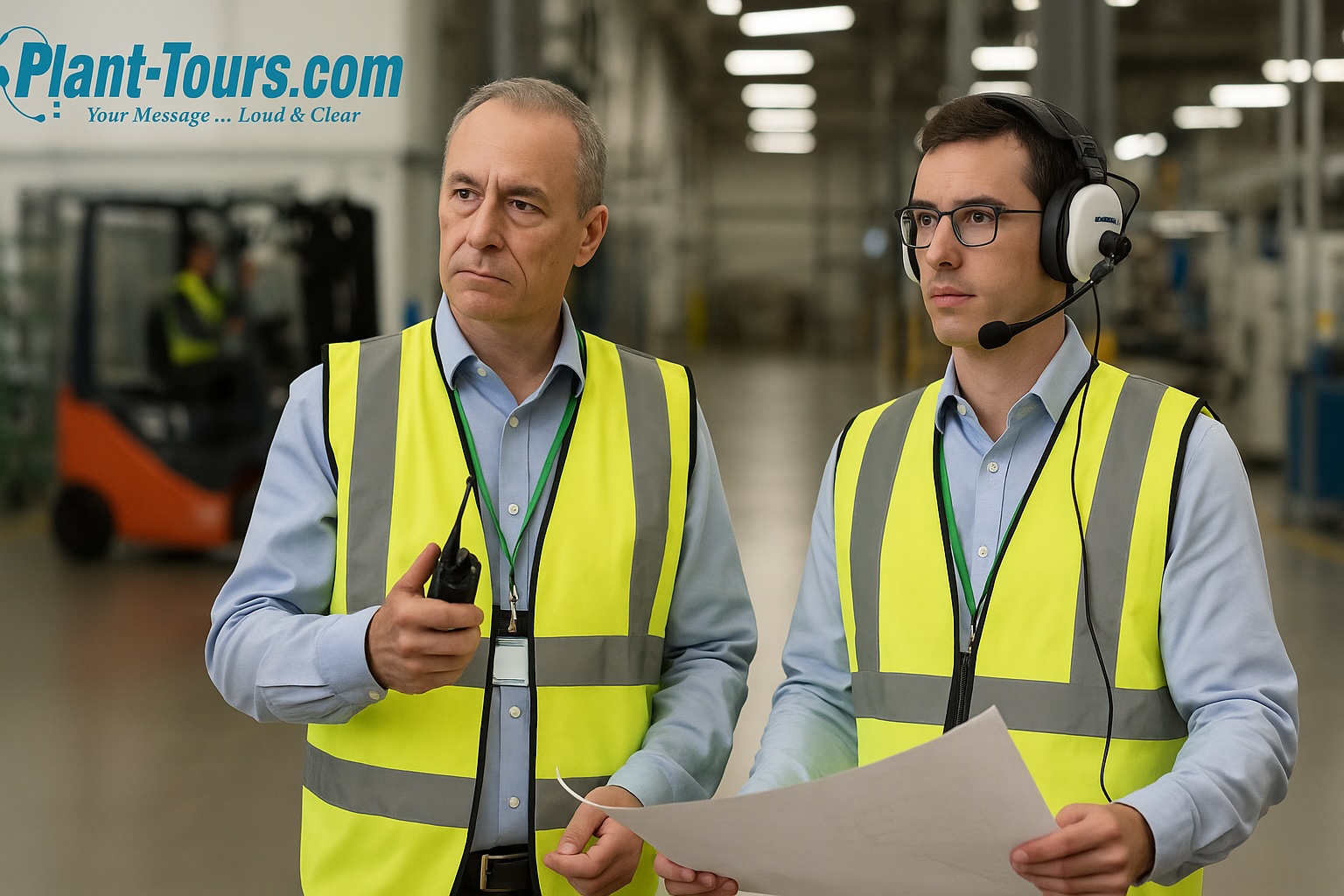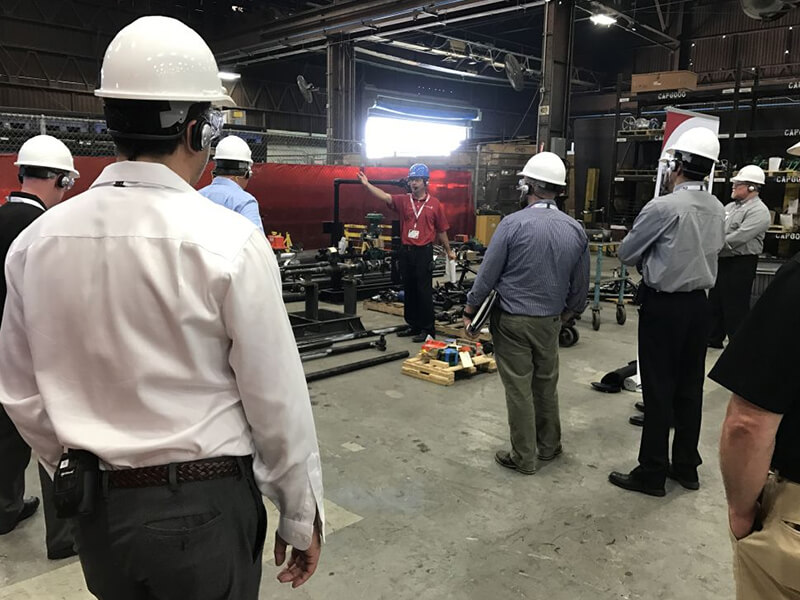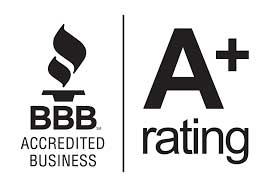The benefits of plant tours are numerous. There is only so much information you can acquire through spreadsheets, memos and videos which necessitates the need for one to take a plant tour in person.
By physically touring a manufacturing facility one can observe firsthand the process, people and equipment to learn, assess and teach innovative ways to improve. This allows participants to take the knowledge they acquire to their own company responsibilities which in turn improves company performance.
Who Can Benefit from Plant Tours?
A manufacturing plant is essential to a business’s success. Being able to respond quickly to customers’ changing preferences, improving a production process and increasing production capacity are just a few of the ways top firms can stay ahead of their competitors.
Anyone who interfaces with manufacturing companies on any level can benefit from factory tours. Executives can gauge a site’s potential, assess the morale of frontline workers, and communicate company strategy and values.
Production managers and other team members can learn from sister plants best practices that they can replicate in their own factories.
Suppliers can understand how they fit in the supply chain and work to improve processes from what they learn about how their goods and services are used.
Plant tours can also be a great way to build relationships with internal and external stakeholders, such as customers and investors.
Senior Leaders
Senior leaders who make key decisions are generally removed from the day to day operations in a manufacturing facility, so how do these executives get the first-hand experience to know what exactly needs to be done to improve a manufacturing process? By scheduling time to visit factories and talk with frontline workers and plant managers, executives can gain a more nuanced understanding of how things work in the plant compared to looking at spreadsheets and discussing plans with other senior managers away from where the work is done.
Now that you understand which are the benefits of plant tours, let us explain how to give a successful plant tour.
What is a plant tour and what are its benefits?
A plant tour is when a group of people, usually customers, employees, executives, shareholders or other stakeholders, take a walking tour of a manufacturing plant in order to learn, assess or teach knowledge related to manufacturing processes.
There are three types of plant tours: Learning tours, Assessment tours and Teaching tours.
Learning tours
Learning tours are about acquiring knowledge and usually focus on how processes on the plant floor are conducted. A first-hand look at how work stations are set-up, how workflow to the stations are designed, and how safety procedures are implemented can be observed in a way that presentations and spreadsheets can’t articulate. This provides an opportunity to come up with innovative ideas for improvements.
Assessment tours
Assessment tours are not about learning but rather evaluating a plant. It focuses less on learning from the plant and the tour guide leading the tour group but more about the visitor and the knowledge they bring to the plant tour. Some assessment tours determine if a plant is capable of achieving a goal. Customers will visit suppliers to see if they can perform up to their standards, executives will visit a plant to see if they can fulfill an increase in customer demand for a particular product, investors will visit a factory to see if it is worth an additional investment or needs to be shut down. It is also a way to evaluate the employees in the plant and how their performance is affecting operations (human resources).
Teaching tours
Teaching tours are important for bringing knowledge to the employees of the plant that is being visited. An expert, e.g. a manufacturing process guru from Harvard Business Review, can visit a plant and share best practices with plant managers and other employees in a way that is much more effective than a video conferencing call or written memo. These tours can also have a significant impact on morale by showing the plant they are worth spending time and money on to improve their performance.
Plant Tours Should be Carefully Planned
However, just having plant tours is not automatically going to produce valuable results. Clear objectives must be set in order to realize the full value of the tour. With objectives in mind, factory tour organizers need to ask themselves “why are we scheduling a tour”, “who should be in attendance”, “what would be the ideal result for the business after conducting the tour”, “where should the tour be conducted” and “when should the plant visits take place”. Frameworks for discernment and retention of learning must also be developed so attendees can remember what they learn in order to recall and apply when they return to their everyday routine. Creating an easy to remember “success stories” template is one example of how to create a better understanding of what is learned during the plant visit.
What makes a good walking tour?
A good walking tour is set up in the planning stage. Setting clear objectives and communicating them to participants before arriving at the facility will prepare everyone for a successful plant tour.
By understanding if the tour will be focused on learning, assessment or teaching will help participants frame their objectives before beginning their tour. During the tour itself, making sure appropriate areas of the plant are included in the tour is important, only include useful information and interesting facts to keep the tour focused on salient topics.
It is also crucial to make sure that everyone keeps an open mind for innovative ideas that may be uncovered. This is one of the main benefits of plant tours.
It is also of utmost importance to make sure communication during the tour is clear. Whether the tour is focused on learning, assessment or teaching – knowledge transfer is the key component. No one will benefit from the tour if participants can’t hear what is being said due to noise or distance on the plant floor. Raised voices over background noise in large and loud environments is not effective therefore a different solution must be found. Plant-Tours.com offers high quality headsets that provide crystal clear audio in every environment therefore perfect for these applications.
If you plan to organize a Plant Tour, it might be useful to download our free Factory Tour Checklist.
How do you conduct an effective plant tour?
The exact steps to conduct an effective plant tour will vary depending on the facility, number of guests and objectives of the tour. The following are general guidelines you should follow as a standard operating procedure:
First step is to have a welcome area where participants will gather.
Have tables set up to distribute name tags, Plant-Tours.com tour guide systems headsets, and PPE if necessary.
Make sure you warmly greet guests as they arrive.
Deliver your prepared opening remarks and repeat the objectives to emphasize the purpose of the tour to your guests.
From there the tour guide will lead the group along the planned route in the manufacturing facility using the prepared tour script. This script should be customized according to the objectives and answer the question: What is the purpose of a plant tour?
A plant tour should explain how facility operations work, showcase new technologies, equipment, and products and highlight frontline workers responsibilities. Also take photos for your website, employee communications, the media and social media to promote the event. After the tour, designate a place for a Q&A session and to return the tour guide headsets, PPE and other equipment needed for the tour. If possible also have refreshments, you can use cookies and beverages as a way to encourage networking!
Contact Plant-Tours.com today for a Free Demo Kit to test our tour guide system for your particular facility before your event. Plant-Tours.com offers one-way tour headsets and two-way tour headsets that will make sure your message comes through loud and clear every tour, training and event you have!
